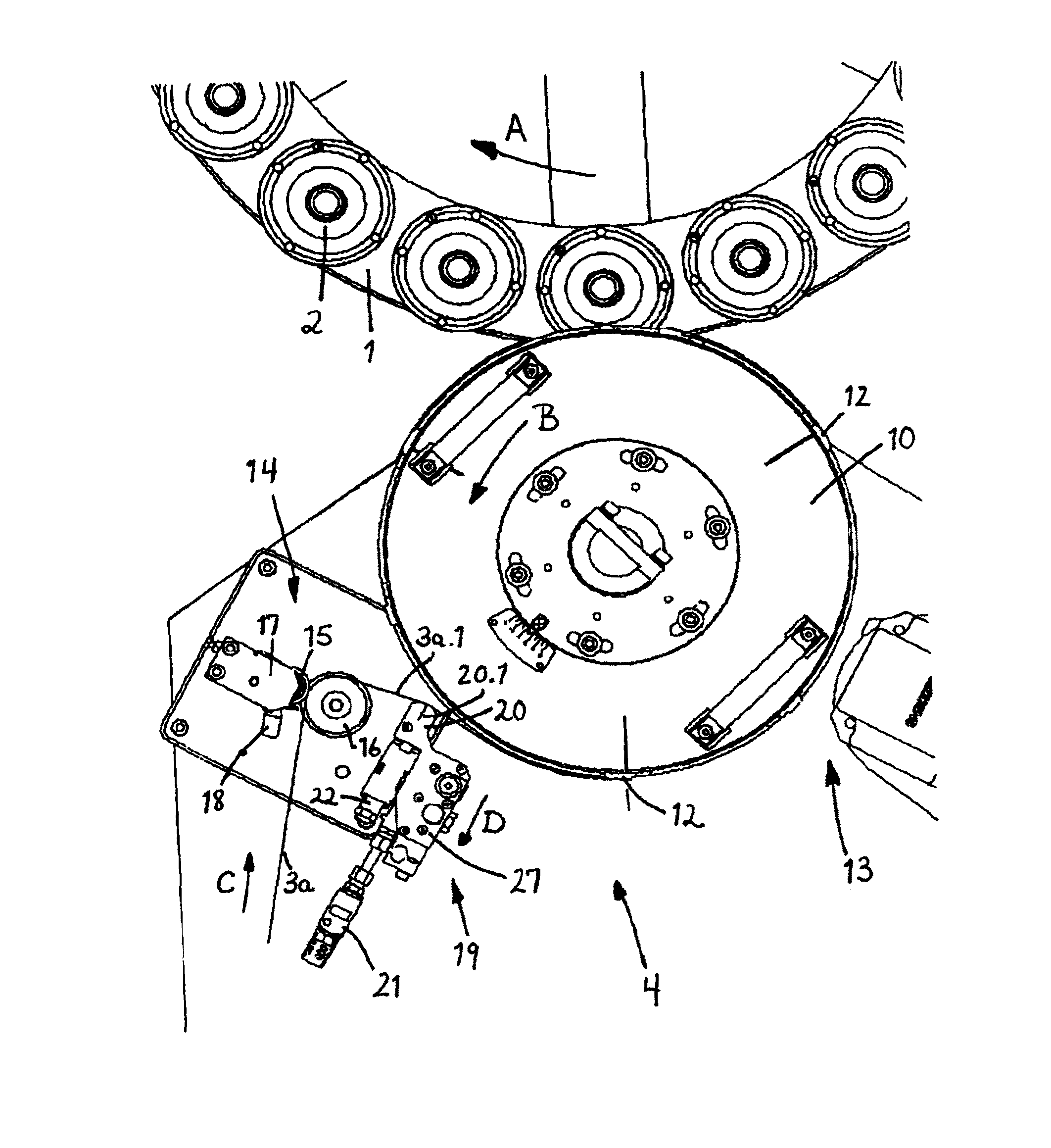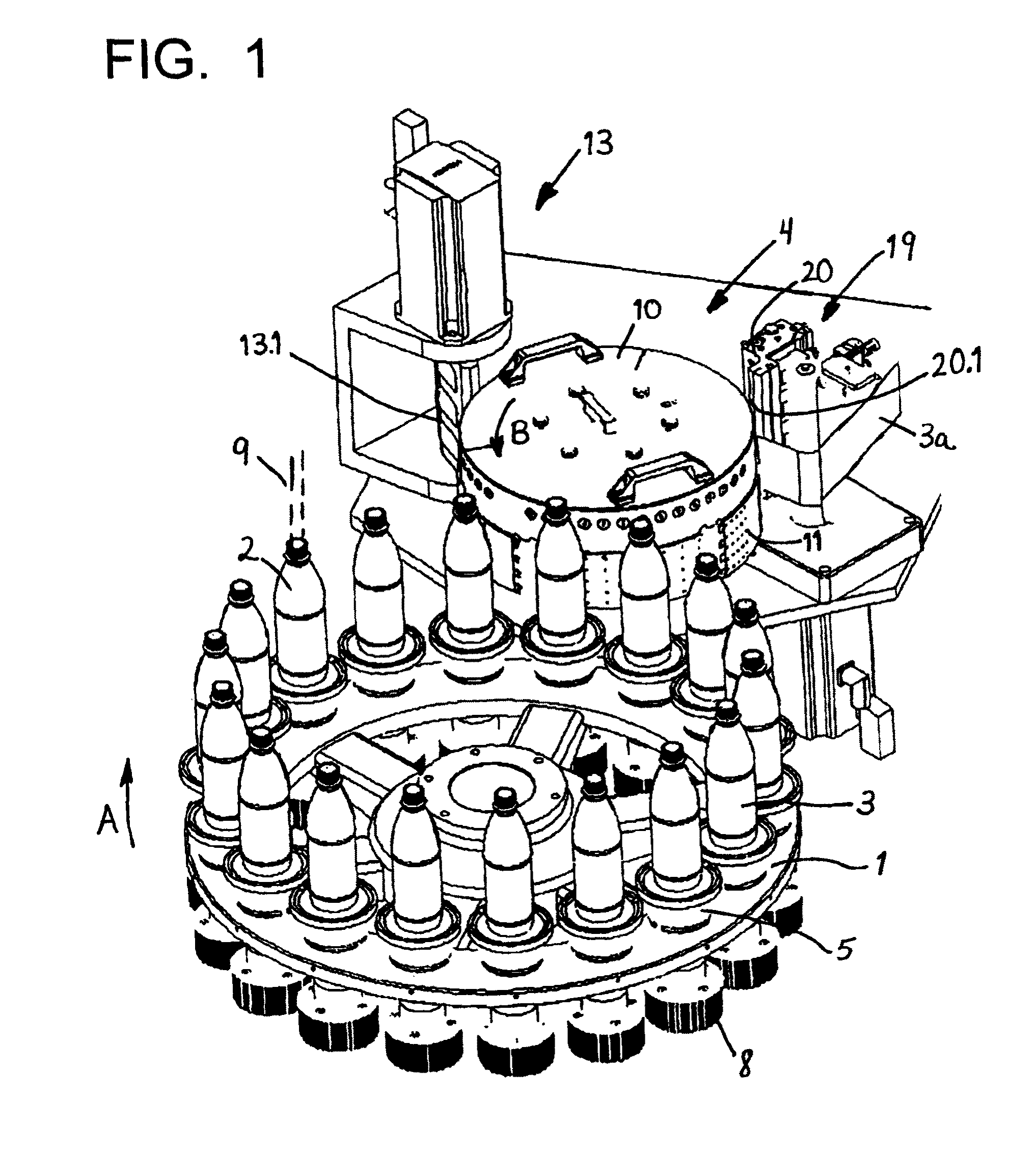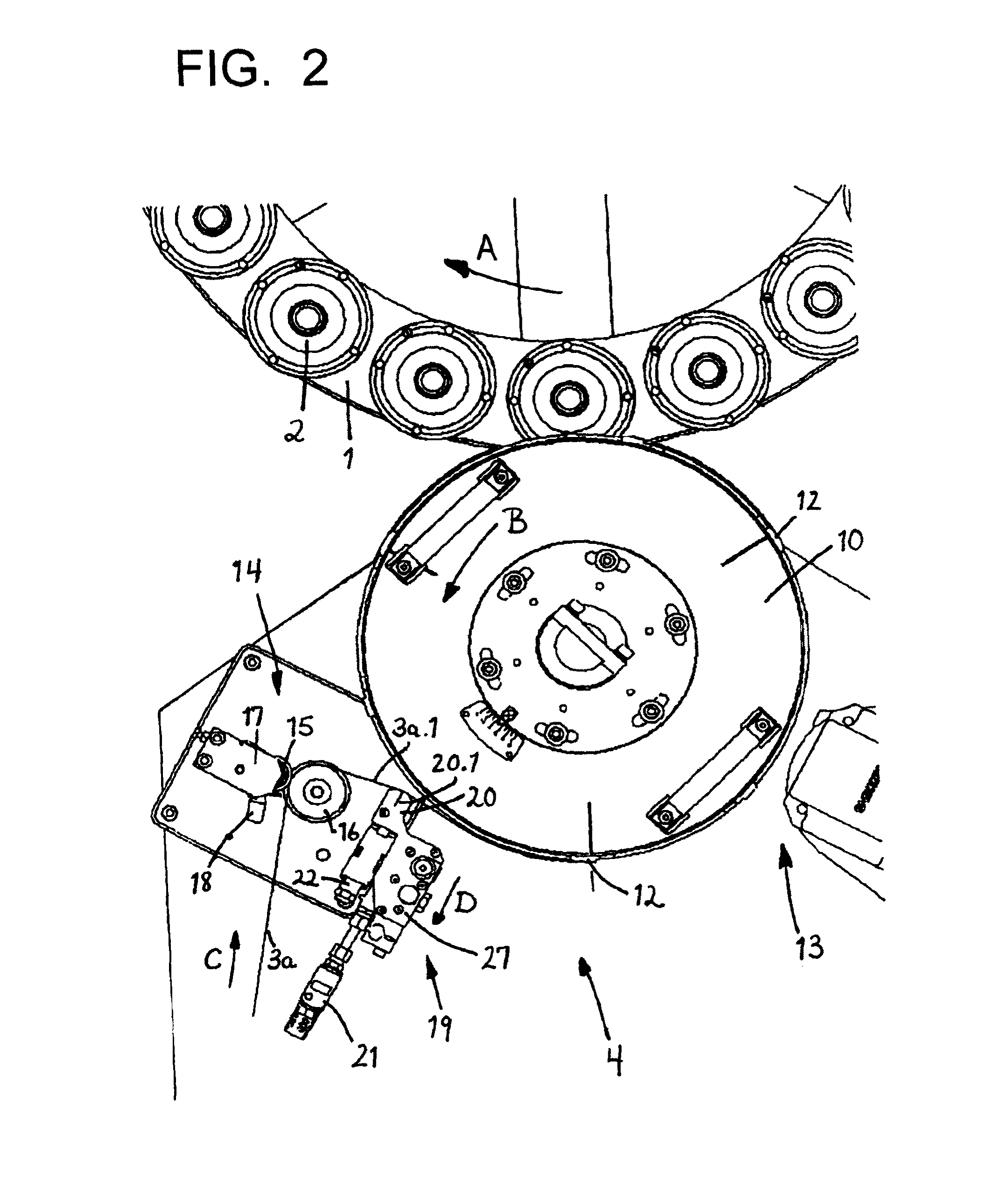Method for labeling containers in a beverage bottling plant and a labeling station for a labeling machine in a beverage bottle labeling plant
a beverage bottling plant and labeling station technology, applied in the directions of labelling, transportation and packaging, packaging, etc., can solve the problems of displacement of labels on transfer drums, difficult to convert to different label lengths, and more expensive construction, so as to minimize the soiling of functional elements, maximize the effect of accuracy and save glu
- Summary
- Abstract
- Description
- Claims
- Application Information
AI Technical Summary
Benefits of technology
Problems solved by technology
Method used
Image
Examples
Embodiment Construction
[0031]In the figures, 1 is the rotary-driven rotor of a rotary-type labeling machine rotating about a vertical, substantially vertical, or essentially vertical machine axis in the direction of the arrow A for labeling bottles 2 with an all-round label 3. The number 4 refers to a labeling station (labeling device) which is provided at the periphery of the rotor 1, not rotating with this latter, and is used to apply labels 3 onto the bottles 2 arranged standing upright with their bases on container carriers 5 (bottle pads) and moved by the rotor 1 past the labeling device 4.
[0032]For transfer to the bottles 2 and fixation thereon, the rectangular labels 3 in the labeling device 4 are provided during transfer to a bottle 2, on their leading narrow side and on the narrow side trailing during the transfer, with a strip-shaped application of glue 6 and 7 respectively, and this is on the reverse of the labels, so that with the leading glue application 6 each label 3 adheres to a bottle 2 t...
PUM
| Property | Measurement | Unit |
|---|---|---|
| pressure | aaaaa | aaaaa |
| contact pressure | aaaaa | aaaaa |
| length | aaaaa | aaaaa |
Abstract
Description
Claims
Application Information
 Login to View More
Login to View More - R&D
- Intellectual Property
- Life Sciences
- Materials
- Tech Scout
- Unparalleled Data Quality
- Higher Quality Content
- 60% Fewer Hallucinations
Browse by: Latest US Patents, China's latest patents, Technical Efficacy Thesaurus, Application Domain, Technology Topic, Popular Technical Reports.
© 2025 PatSnap. All rights reserved.Legal|Privacy policy|Modern Slavery Act Transparency Statement|Sitemap|About US| Contact US: help@patsnap.com



